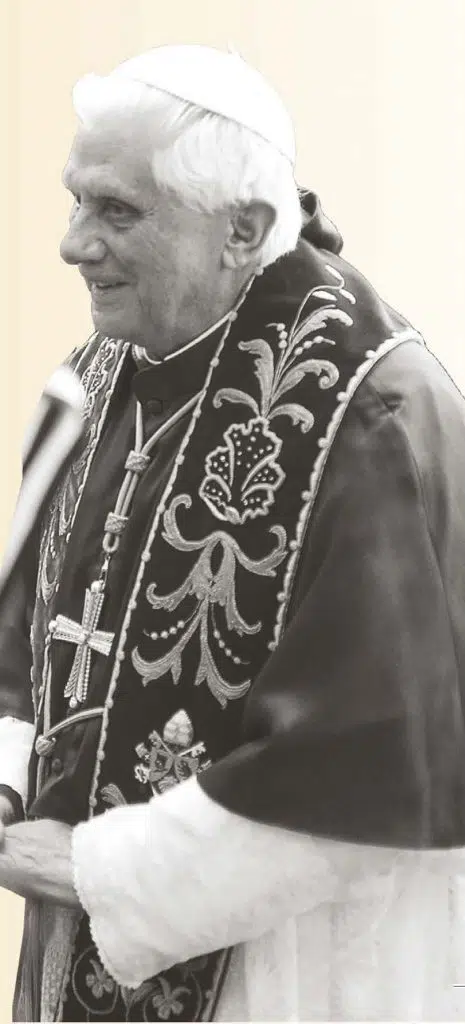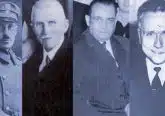Pope Benedict XVI, the Saints and the Universal Call to Holiness

 The saints have been of life-long interest to Pope Benedict XVI. As a young priest participating in the Second Vatican Council (1962-1965), then Father Joseph Ratzinger was greatly influenced by a main theme: the “Universal Call to Holiness.” The Council fathers wrote that “all the faithful of Christ,” in every situation and walk of life, “are called to the fullness of the Christian life and to the perfection of charity” (Lumen Gentium, 40). Holiness is possible and it is for everyone.
The saints have been of life-long interest to Pope Benedict XVI. As a young priest participating in the Second Vatican Council (1962-1965), then Father Joseph Ratzinger was greatly influenced by a main theme: the “Universal Call to Holiness.” The Council fathers wrote that “all the faithful of Christ,” in every situation and walk of life, “are called to the fullness of the Christian life and to the perfection of charity” (Lumen Gentium, 40). Holiness is possible and it is for everyone.
Father Ratzinger developed this theme many years later as Pope Benedict XVI, devoting his 2006 – 2011 general audiences to a Catechesis on the Saints. These reflections form the longest continuous text of his pontificate, comparable to Pope St. John Paul II’s general audience catechesis on the body, now called the Theology of the Body.
In his Catechesis on the Saints, Pope Benedict XVI took a profound and innovative re-reading of the entire saint tradition through the lens of the “Universal Call to Holiness,” seeing the saints as tangible proof that holiness of life is possible and necessary. As he wrote, “in every epoch of the Church’s history, on every latitude of the world map, the saints belong to all the ages and to every state of life” (General Audience, April 13, 2011). Saints are the answer God provides to the world in a time of crisis.
Pope Benedict XVI repeatedly returned to the saints’ lives and writings in his approach to advancing a theological opinion. Through what one could call the “Ratzinger method,” he posed then answered questions by first examining the Old Testament background, then New Testament insights, then deepened his thoughts with the recorded wisdom of the saints and Fathers of the Church. Only then did he contemplate modern theologians’ insights, forming his own, often brilliant, solution, which almost invariably included examples or insights from the saints.
It thus makes perfect sense that Pope Benedict XVI chose to crown his musings with the saints. He writes that they, “let themselves be shaped by the word of God through listening, reading and assiduous meditation” (Verbum Domini, 48). They participate in the prophetic aspect of Christ’s mission by interpreting the Scriptures through their very words and deeds, such that it is the saints, not theologians, who are the best interpreters of Scripture and teachers of the faith. After all, it was St. Anthony of the Desert (c. 251-356) who was so moved by the words of Christ, “if you would be perfect, go, sell what you possess and give to the poor, and you will have treasure in heaven; and come, follow me,” (Mt. 19:21) that he did just that. St. Francis of Assisi (c. 1181- 1256) bore on his body “the marks of Jesus” (Gal. 6:17). St. Damian de Veuster (1840-1889) “stretched out his hand and touched” the leper (Mt. 8:3), even rejoicing when he became a leper himself. And Mother Teresa (1910-1997) slaked the thirst of Christ (Jn. 19:28) in caring for the poor.
The task for all Christians is to strive for this same holiness, to “aim high, for God’s heights,” as Pope Benedict XVI wrote. “Let us not be afraid that God will ask too much of us, but let ourselves be guided by his Word in every daily action, even when we feel poor, inadequate, sinners. It will be he who transforms us in accordance with his love” (General Audience, April 13, 2011). And as He did for the saints, so too will the Lord do for each and every one of us.
 This article appeared in the March 2022 edition of The Catholic Telegraph Magazine. For your complimentary subscription, click here.
This article appeared in the March 2022 edition of The Catholic Telegraph Magazine. For your complimentary subscription, click here.













